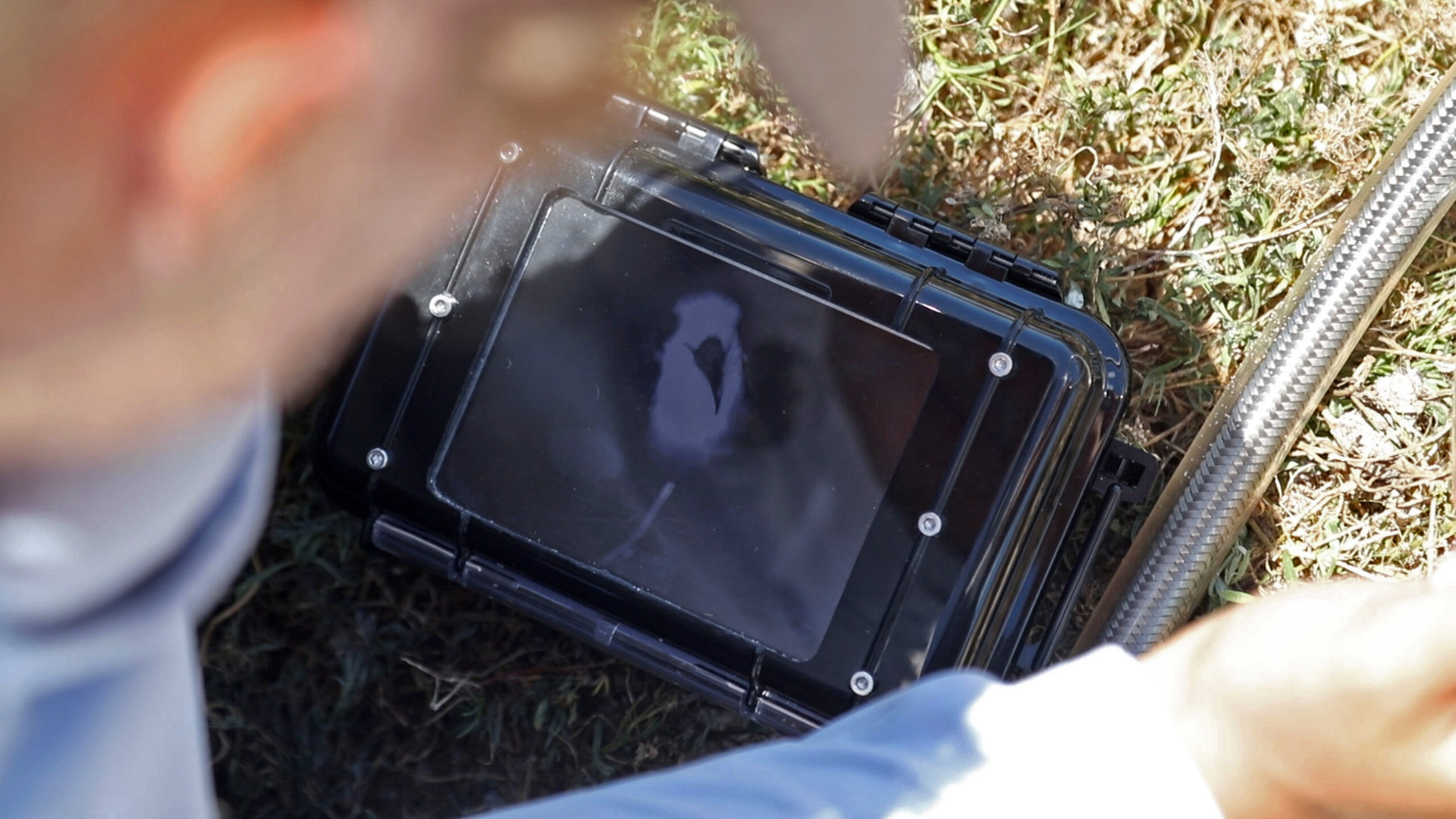
Though one of the largest species in the storm petrel family, akihikeʻehiʻale (as they're known in Hawaiian) weigh only a few ounces and have a dark plumage and nocturnal lifestyle that make them very difficult to study. Akihikeʻehiʻale describes its foraging behavior as “the bird that steps on water.” Akihikeʻehiʻale can sometimes be easiest to detect by listening for their unique call at night, a song that has been compared to what giggling, drunk gnomes might sound like. You don't want to miss this video crafted and produced by Daniel Rapp! Check it out here!
Tristram's storm petrels (Oceanodroma tristrami) were previously wiped out from Midway Atoll due to rats preying on their eggs and newly hatched chicks. After the Refuge was declared rat-free in 1996, it took two decades for Tristram’s storm petrels to reappear. Adults were first heard calling in flight by U.S. Fish and Wildlife Service Volunteer, David Dow, in February 2016. Seabird researchers Dan Rapp and Sarah Youngren with Conservation Metrics Inc., used a wireless infrared burrow camera and detected the presence of three healthy chicks on March 22, 2016. The confirmed chick count increased to four for the Atoll after a nest was discovered on Eastern Island on April 24, 2016.
On Midway, they are difficult to study because of the massive number of Bonin petrels that nest in similar underground burrows. Bonins are larger in size and have been known to boot Tristram's from their burrows. Luckily, Tristram’s tend to prefer digging in harder, rockier ground, which are areas that Bonins tend to avoid. This is especially true on Eastern Island. Much of Eastern is still paved with the weathered remains of three WWII runways, so very few Bonins nest there and prefer the soft terrain of Sand Island. Therefore, Tristram’s have found niche nesting habitat in the WWII revetments on Eastern in piles of rubble built in the 1940s to provide protection around the runways for airplanes. A survey of those revetments in 2021 found over 100 unknown active Tristram’s nests!
Nest boxes are another way to attract more akihikeʻehiʻale. Watch how he and Sarah Youngren craft the boxes and position them on Eastern Island’s revetments. The boxes’ entrance pipes are sized to allow akihikeʻehiʻale in but hopefully keep Bonins out. Note the new audio system purchased by your monetary support through https://friendsofmidway.org/. You don’t want to miss the end – turn up the volume to hear their quirky, crazy sounds!

Tristram’s storm petrels now nest throughout the entire Northwestern Hawaiian Islands within Papahānaumokuākea Marine National Monument. These well-protected sites constitute the most important breeding areas for this species left on earth.
Article by: J. Brack and A. Bell Video crafted and produced by :Daniel Rapp
